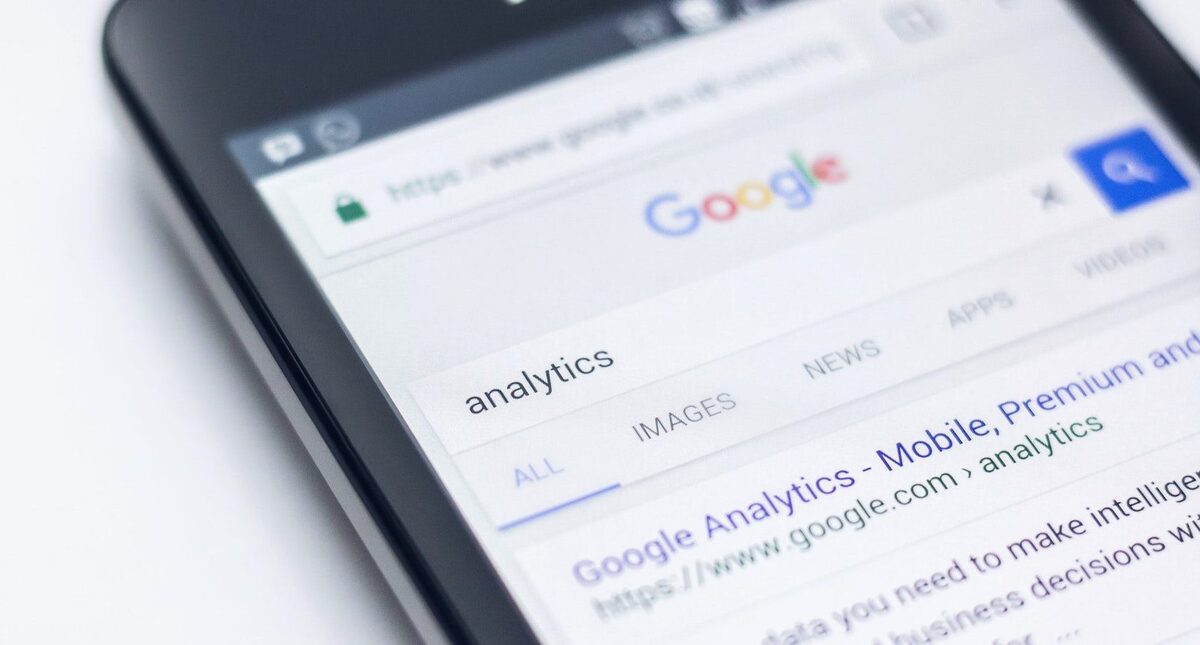Running an e-commerce store or an online business is tough. There is a lot of competition between different sites, both among small businesses and giants like Amazon. Everyone is competing for customers, their attention, and their clicks. The race to get the number 1 spot on Google is often a photo-finish, and this can take months to achieve, even if you have a great SEO strategy in place.
Now, there is another way through which companies can get customer’s money, and that is through paid ads or PPC (pay-per-click). PPC is an advertising model used to drive traffic to your site. In this model, a website owner pays a publisher (a search engine) when the ad displayed is clicked on. Most common services include Google AdWords, Amazon Advertising, and Microsoft Advertising or Bing Ads. The service we will discuss in this article is Google AdWords.
We’ll take you through the process of creating an account and setting up your first ad campaigns.
Let’s get started.
What is Google AdWords?

Google AdWords is a Google service for advertising. It allows businesses to create and show ads on Google search results. They usually appear at the top or the bottom of a search. This is a widespread and effective way to get money from customers, but the marketing and advertising strategy needs to be implemented well.
To help you understand what AdWords is and how it works, we will go through some basics on using this service.
What are the advantages of using AdWords?
Advertising can help you generate more revenue and get more traffic for your site. For one, you get many targeting options you can edit and customize to target a precise audience. You don’t want to spend your money and target a general one. Instead, you want to make sure you show your products to precisely those customers who might actually be interested in completing the purchase. This is what it means to show your products to a relevant audience.
You can filter your audience by location, age, keywords, and even choose the time of day when your ads will be shown. This step requires a lot of research about your customers’ behavior so make sure you know who your target audience is before creating an ad.

You can also target specific devices your audience is browsing on. You can choose between desktops, tablets, and mobile devices. Naturally, you want to make sure your ads are optimized for the device they are being shown on. While we’re at it, make sure your website is optimized as well. If you don’t have a fast, responsive website compatible with all devices, you can count on losing a certain percentage of your customers.
Another advantage of using this method is that you are only paying for the results. This means that you pay for clicks on your ads, not impressions, which is why this is called a PPC model. This helps save you some money as you only pay for specific actions your customers take.
Lastly, there is the performance tracking option for your ads. This means you can track the number of users who view and click on your ad. You can also track the number of viewers who made the desired action after viewing your website.
What should I be aware of?

AdWords is a powerful service with many options for targeting and creating ads. Before you dive into this, make sure you are aware of the different options for displaying ads.
Figure out your objectives first. AdWords offers the following: generating sales, registrations, email sign-ups, lead generation, brand awareness, and recall value. To achieve different objectives, you will need to run several different campaigns.
What you also need is a landing page. This page opens when a user clicks on your ad, making it relevant to the ad being displayed to your audience. This is a standalone page and is different from your main website as it is focused on a specific objective. If done well, it will help convert visitors into leads and customers.
When designing a landing page, make sure it’s focused on individual offers. It has to have an easy-to-see call to action, be mobile-friendly, and deliver what you promised. This means, if your landing page talks about a discount, make sure this is visible on both the ad and the landing page.
How to set up an account?
As with any service, you need to create an account to use it. If you have a google account, you can sign up with it. If not, then you need to create one. Once you do this, you will be taken to the following page (see below), where you can create your first campaign.
Creating the first campaign
A campaign focuses on a theme or a group of products. To create one, you need to set up a budget, choose your audience, and then write the ad. First, you need to set up your budget, then choose your audience’s location, set keywords, and set your bid.
Setting the budget makes sure you never cross your daily limit. To set a good budget, you need to understand how many visitors your landing page can convert into customers. If this is your first time, then use an average. For example, WordStream sets the average of conversions across industries at 2.35%. This means that, on average, 2.35% of users take the desired action after clicking on the ad. By taking this rate, you can figure out how much you want to spend on each visitor. This is known as cost per acquisition.
When it comes to the location, you can even target your audience in a certain radius from the desired zip code. You can target cities or countries, or even set up different bids for different radiuses.
The next step is to choose between Google Search Network and Display Network. The Search network puts your ads on Google Search engine results, while the Display network sets your ads on any website that shows ads.
Lastly, choose your keywords. You can choose about 15-20 keywords that can trigger your ad to appear. However, pick those keywords that you are sure will bring desired results and not just any keywords you find relevant. Adding any keyword to your ad can make you lose your money as your ad will not show up to the relevant customer. Also, pay attention to the keywords’ search volumes, so you know that your ad will appear for that specific keyword. This is a crucial step, so make sure you do proper research before using a keyword.

There are four match types for keywords; broad match (this allows your ads to show for search on similar phrases such as synonyms, plural forms, and misspellings), phrase match (your ad is only displayed in results that are in the same order as your keyword), exact match (ensure your ad only appears when someone searches with an identical search term), and negative keywords (terms you do not want your ad to show for).
If you restrict your keywords too much, you might limit the traffic coming to your site, so keep them as broad as possible but still relevant.
Each category has its pros and cons, so use what you know is best for your business. If you are a beginner, track your progress carefully so you can later change the settings and make improvements.
Setting a bid
When choosing a bid, you have two options. You can let AdWords set your bid automatically to ensure you get the most clicks, or you can do it manually. Doing it manually can be more cost-effective, but the service doing it automatically can be helpful if you are a beginner. You can always change this later when you learn a bit more about the service and how it works.
Writing the ad

Finally, you got to the fun part. This step is essential, and you need to create an ad that’s visually appealing, interesting, and effective at attracting visitors. Make it compelling and communicate your offers clearly. That will convince the user to click on your ad and visit your website.
Here are some tips to ensure your ads are more attractive and compelling:
Keep it short
The headline is crucial as it is the first thing your users see. This is basically the make it or break it, so make sure it’s good. Short and attention-grabbing is the best way to go.
Have a clear call to action
You can have up to two headlines in an ad, each up to 30 characters. The description gives you 80 characters, and this is the part you use to convey your message to the customer. Include any discounts and offers in this section.
Lastly, make sure there are no grammar or spelling mistakes.
You can also preview the ad to see if you like what you’ve done before publication. The picture below shows what this section looks like:
Once you are done, click Save. In the next step, you will enter your business and payment information. You will be charged when you use up your set budget or 30 days later, whichever comes first.
Running multiple ads
You can run and create multiple ads, but make sure each ad focuses on one objective only. Each campaign consists of multiple ad groups, and each ad group consists of similar keywords and landing pages. The ad groups in a single campaign share the same budget, locations, and device targeting options. That means that you need to create separate campaigns if you want to target multiple locations or devices.
How to evaluate the effectiveness of my campaign?
With AdWords, you can track your ads’ performance and see how well your ads are performing. To do this, you need to select a conversion source, which can be a website or a phone. You need to set up Google Analytics goals on your website and set up Google Analytics conversion tracking. You can also track phone conversions.
Click here to set up Google Analytics; it will only take few minutes.

Google will also track how your ads perform by using its Quality Score. Google uses landing page relevance (relevance of keywords on your landing page), expected click-through ratios, and ad relevance to calculate this score. You can see it under your AdWords account, under the column named Quality Score. This helps determine the positioning of your ad as well as the bidding process and what you pay per click. It will multiply the bid amount with your score.
For example, if your bid is $1 and your score is 0.7, your ad will be placed below your competitor whose quality score is 0.4 and bid is $2. When it comes to scoring, 7/10 is recommended and sufficient. Going above it is great, but not always achievable, and below 7 means there is something wrong and needs to be changed.
This service improves over time as Google collects data about your ads, account, keywords, and audience. Give it some time before you can get enough insights and data to make good changes and make your ads more relevant and timely for your target audience.
Google has a lot of supporting documentation and tutorials you can check out here. These are designed to help you create optimized ads that can bring in more customers and increase your conversions.
Conclusion
Google AdWords is a powerful tool and can be used efficiently to get more customers and increase revenue. However, if you do not use it properly and do not do your research, it can end up costing you more than it actually brings in. That’s why you should carefully consider if you have enough knowledge and skill to run your PPC campaigns yourself. If you are not confident enough, you can always go with a trusted PPC company that is ready to deliver exceptional results.
As with everything these days, you need to do proper research, this is a crucial part of your business, and it needs to be done well. It can have a big impact on your business, both positive or negative.

